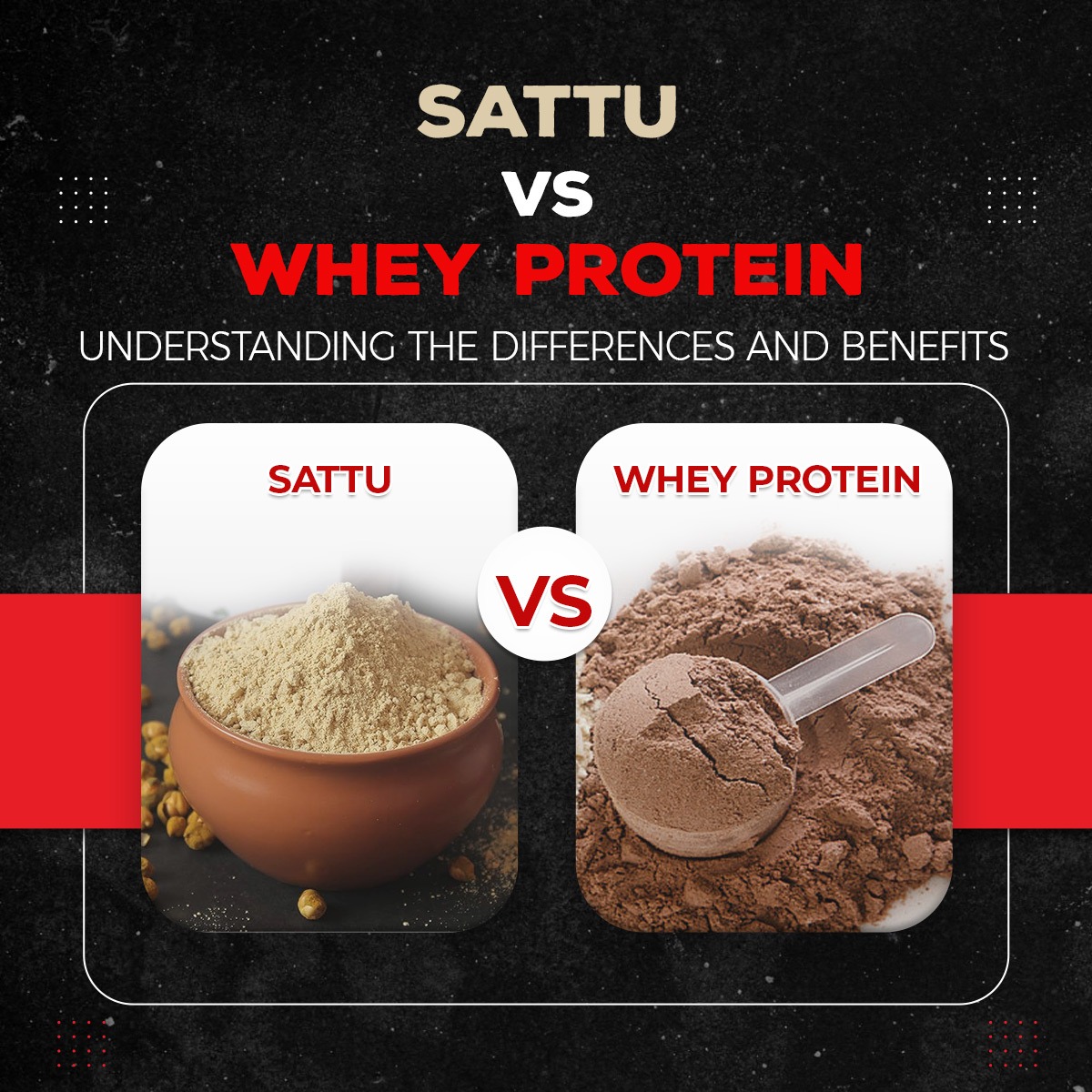Sattu powder and whey protein powder are both popular sources of protein but differ significantly in their origin, composition, and nutritional profile.
Sattu Powder
Sattu powder is a traditional Indian flour made from roasted Bengal gram (chickpeas) or a mixture of other pulses and cereals. It has been a staple in Indian diets, particularly in regions like Bihar, Jharkhand, Uttar Pradesh, and Punjab, for centuries. The preparation involves roasting the grains and then grinding them into a fine powder, which retains most of the nutrients.
Nutritional Profile
- Protein Content: Sattu contains approximately 20-25% protein, which is significant but lower compared to whey protein. The protein in sattu is plant-based, providing essential amino acids but in slightly lower proportions than animal-based proteins.
- Other Nutrients: Sattu is rich in fiber, making it beneficial for digestive health. It also contains carbohydrates, vitamins (especially B-complex), minerals (iron, manganese, magnesium), and is low in fat.
- Health Benefits: Sattu is known for its cooling properties and is often consumed in summer to prevent heatstroke. It aids in digestion, improves metabolism, and provides sustained energy due to its slow-digesting carbs and high fiber content.
Whey Protein Powder
Whey protein is a by-product of the cheese-making process, derived from the liquid portion of milk that separates during curdling. This liquid whey is processed and dried to form whey protein powder, which is available in various forms such as concentrate, isolate, and hydrolysate.
Nutritional Profile
- Protein Content: Whey protein powder is highly concentrated with protein, typically containing about 70-90% protein in its concentrate form and up to 90-95% in isolate form. The protein is complete, providing all nine essential amino acids in a highly bioavailable form, making it an excellent choice for muscle repair and growth.
- Other Nutrients: Whey protein contains minimal carbohydrates and fats, especially in isolate form. It also provides beneficial compounds like immunoglobulins and lactoferrin, which support the immune system.
- Health Benefits: Whey protein is renowned for its ability to enhance muscle protein synthesis, aid in weight management by promoting satiety, and support recovery post-exercise. It is also beneficial for overall immune health.
Key Differences
- Protein Percentage: Whey protein has a significantly higher protein percentage (70-95%) compared to sattu powder (20-25%). This makes whey protein more efficient for those looking to maximize their protein intake, particularly athletes and bodybuilders.
- Protein Source: Sattu provides plant-based protein, while whey protein is animal-based. This difference is crucial for vegetarians or vegans who may prefer sattu for ethical or dietary reasons.
- Nutritional Composition: Sattu is more holistic in terms of nutrition, offering fiber, vitamins, and minerals, whereas whey protein is more focused on delivering high-quality protein with minimal fats and carbs.
- Digestibility and Bioavailability: Whey protein is quickly absorbed and utilized by the body, making it ideal for post-workout recovery. Sattu, with its fiber content, has a slower digestion rate, providing sustained energy but potentially less immediate amino acid availability for muscle repair.
Conclusion
Both sattu powder and whey protein powder have their unique advantages and can be chosen based on individual dietary needs and goals. Sattu is excellent for a balanced nutritional intake and sustained energy, while whey protein is superior for high protein requirements and quick absorption for muscle recovery.


